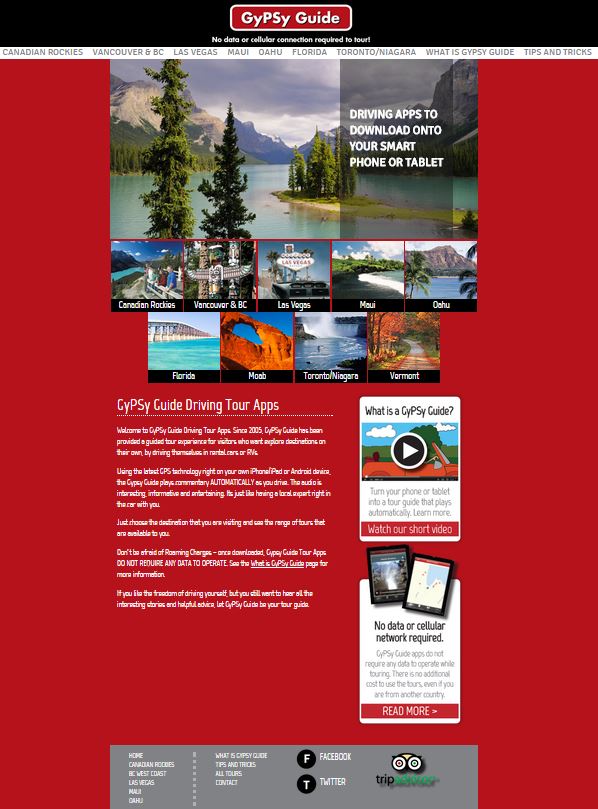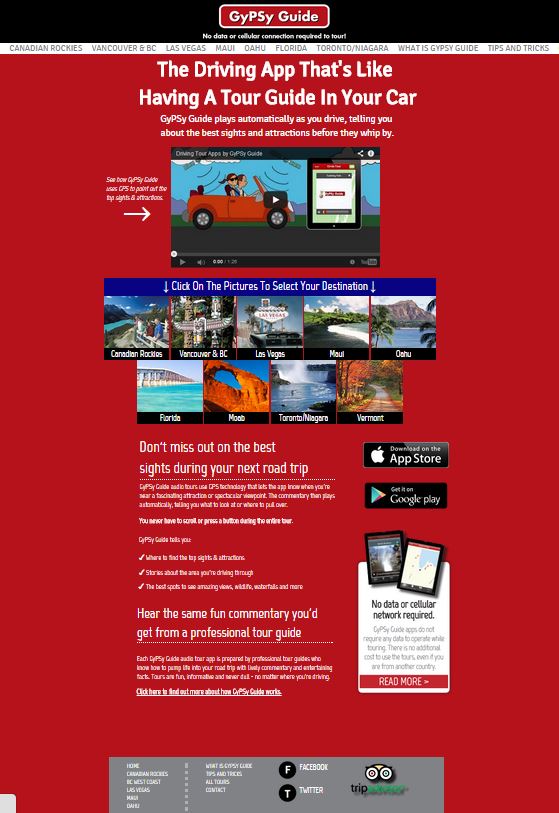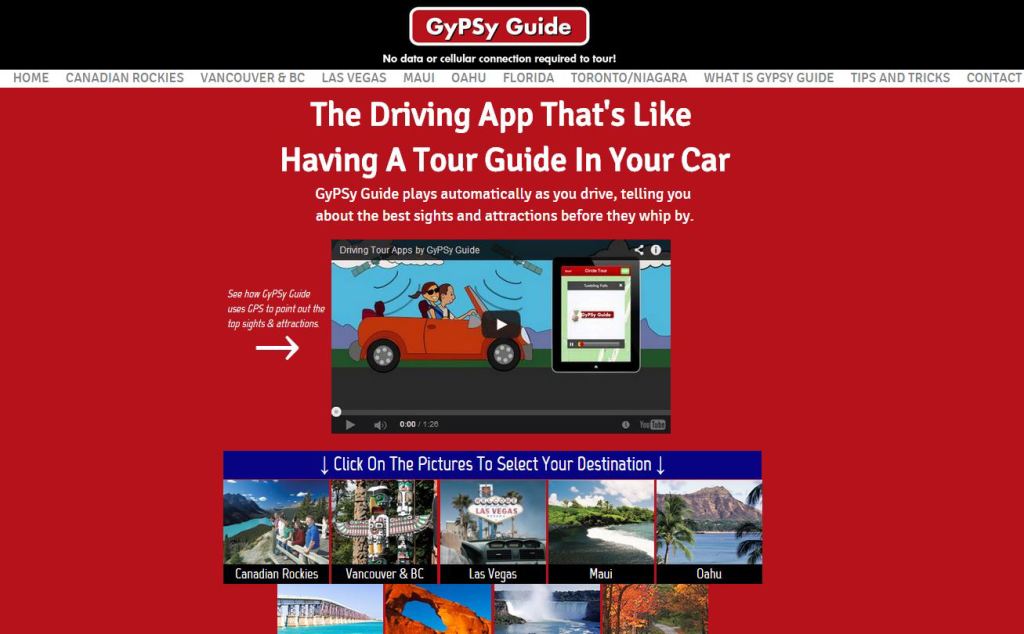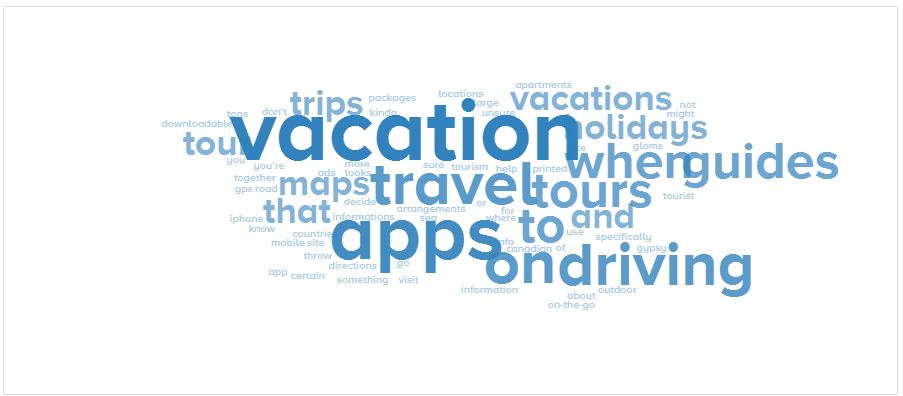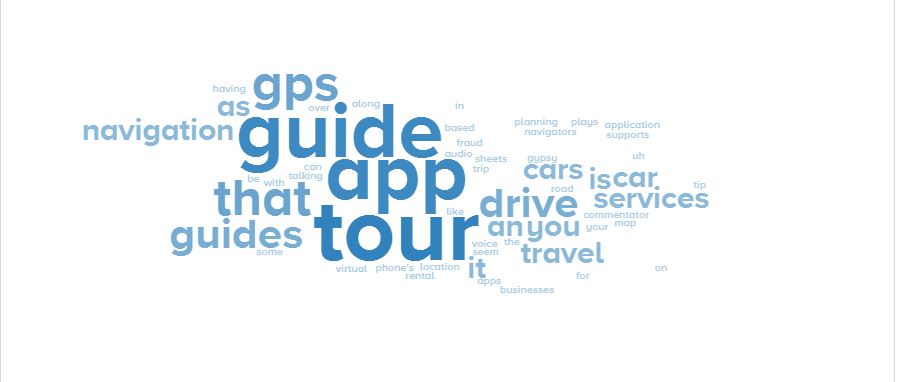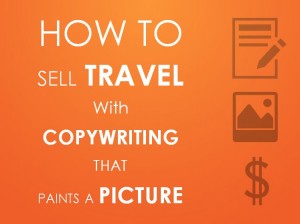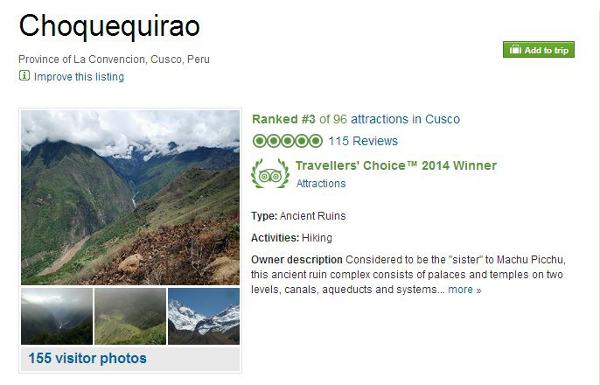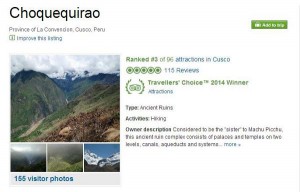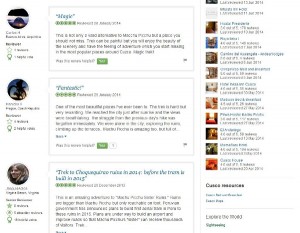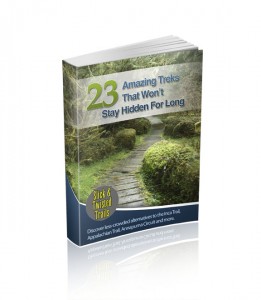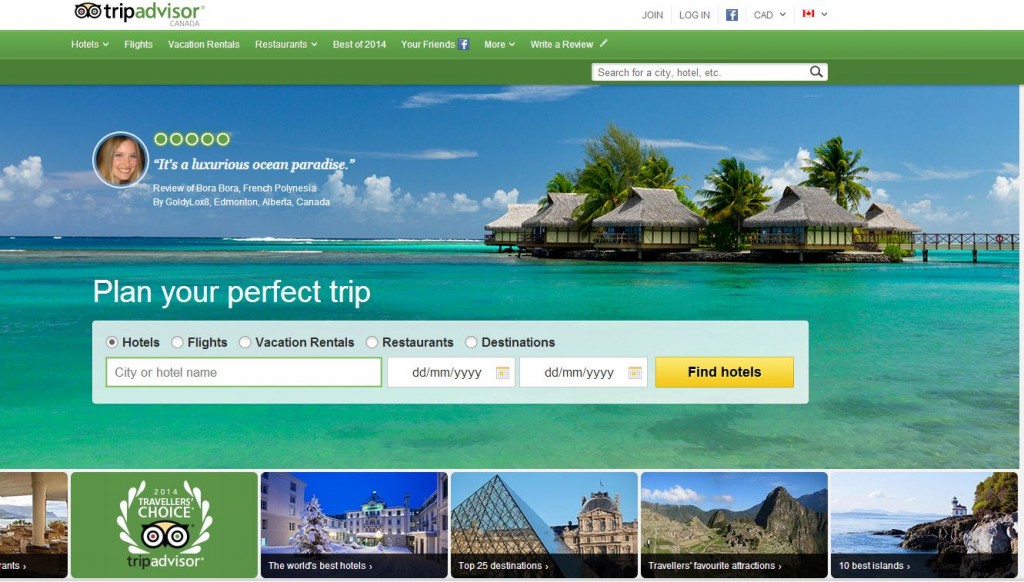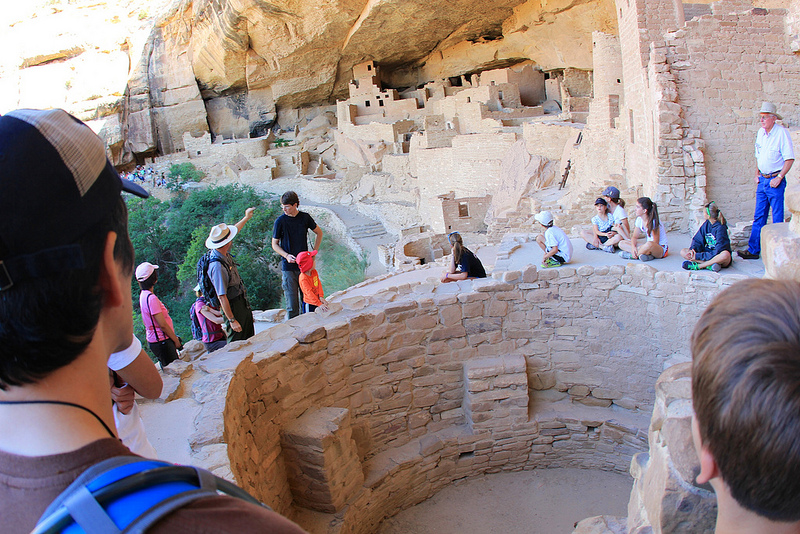
Names matter. Simple as that.
And when it comes to travel blogging, nailing down the right name is especially important.
Your site’s name serves as the jumping point for everything else your blog will be about – your branding, logo, color themes, and content. And because having a good name is so important, many bloggers get stuck on this crucial step of starting a travel blog. If you’re in a similar boat, then this guide may be just what it takes to get those gears unstuck.
You can also check out this in-depth study on the best travel blogger names instead.
How important is the right travel blog name?
What’s in a name? When you’re competing with millions of travel blogs online, having the right name means the difference between getting noticed and getting ignored. The name of your blog is the first thing that any potential visitor will read about you and plays a major role in their decision on whether or not they think your blog is worth a visit.
Aside from providing a hook to attract readers, the name of the travel blog is also central to your blog’s identity. In many ways, the name of your travel blog is your brand, and it should relate to everything that readers can expect out of your blog.
Will your blog be focusing on traveling on a budget, or will it primarily be about the food in your travel destinations? Perhaps you want to build a blog that is centered on your thoughts and personal perspectives about the places you visit. Whichever theme you pick, you need to make sure that the name of your travel blog name is reflective of it.
How good – or bad – the name of your blog also plays a role in how easily it can be marketed. You might want to drop the name of your blog in casual conversation if you’re talking to businesses or fellow travelers. In these cases, a blog name that is easy to remember can be very beneficial.
How to name your travel blog

Standing out, yet remaining true to your identity, is easier said than done. For every successful Nomadic Matt, there are probably a couple hundred travel blogs that have languished in obscurity and failed to generate any profit for the owner. Here are my top tips for choosing a travel blog name that will increase your chances of success.
- Pick a niche
The biggest challenge in succeeding as a travel blog is that there are already so many of them out there. Starting an all-around blog on traveling without any real focus is a surefire way of getting lost in the crowd of general travel blogs or getting overshadowed by the more popular ones.
To avoid this pitfall, I often advise newbie bloggers to come up with a niche and focus on it. You may focus on a type of lifestyle (budget or luxury?), activity (e.g. watersports, hiking, partying, food) or destinations (e.g Southeast Asia, Europe, beaches, hiking spots). Although this will restrict the scope of audience that your blog will attract, you readers you draw in will have a higher tendency to become regular subscribers if they are interested in your content.
Nowadays, it’s tough to come up with an idea that is 100% original, and that’s fine. You probably won’t be the first blogger to document traveling around Southeast Asia on a budget or exploring all the theme parks around the world. This is where content quality and consistency come in – ultimately, these are what makes readers stay.
2. Think of a name that’s unique and memorable
There can only be so many Nomadic Matt’s or Wandering Earl’s out there before people start to get sick of similarly named blogs. These generic names may have worked a long time ago (and those two have become wildly successful), but they just wouldn’t cut it for a blogger who’s just getting started right now.
Nowadays, you need a hook: a name that stands out and has good recall. The truth is that you can throw all these rules out the window if you can come up with a name that’s unique and memorable. One of our favorites is Bacon is Magic. The name doesn’t tell you everything about what the blog is about (something about food perhaps?), but it’s quirky enough to entice you to check it out.
3.Pick a name that instantly describes your blog
Another strategy is to come up with a name that eliminates a lot of ambiguity on what your blog is about. This is great if you specifically want to reach out to an audience made of people with similar interests or needs.
An example of this is Have Baby Will Travel, a blog focusing on traveling with infants, which has been going strong for more than 10 years now. The title of the blog itself says enough about what the blog is about, providing an instant hook for parents who want to travel with babies or young kids.
Budget traveling is easily one of the most popular topics that a travel blog can tackle. Two of the best blogs we’ve come across that perfectly encapsulate this concept in their titles are The Poor Traveler and The Professional Hobo. These blogs are massively successful. Without a doubt, their choice of perfectly descriptive names played a huge role in their success.
4.Check if your name is available in social media
One last thing you need to do before you get too invested in that new name is to check if the handle is still available on social media. The NameChk website comes in very handy for this, as it can check all major social media platforms and different domains at the same time. You would want a name that’s still available on Facebook, Instagram, Twitter, YouTube, and Pinterest.
One thing to keep in mind when coming up with a travel blog name is that Twitter limits usernames to only 14 characters. Truncating some words to fit this limit is certainly an option, but we wouldn’t recommend it for the sake of branding consistency.
5. Secure a .com domain
Internet users are less discriminating nowadays about websites that end in .net or .biz, but nothing beats the simplicity and ubiquity of a .com domain. If you can afford it, we even recommend getting the .net and .biz (and other popular domains) variations of your travel blog name so that you can have all of them redirect to your site. It adds a bit to your business expenses, but this small step ensures that you get as much traffic to your site as possible.
6. Make your travel blog name SEO-friendly
Search engine optimization (SEO) will help your travel blog to the top results in Google Search. Bloggers come up with a lot of ways to help their sites rank better in Google through their article titles and content, but at this point, all you need to be concerned about is to come up with an SEO-friendly blog title.
When it comes to optimizing SEO, all you need to do is to integrate the important keywords into your title. If your blog will be about food, then you might want to incorporate any of these words into your blog name: taste, dish, meal, eat, cook, flavor, bites, recipe, or simply, food. This is an excellent way to increase the chances of your blog coming up in the top results when anyone searches for travel + food.
Where to find travel blog name ideas

“Ideas are the lifeblood of business,” according to a famous quote by Richard Branson. The thing about good ideas is that they are inspired, not forced. Here are few tips that can help you out in the creative process.
- Read a lot of travel books
We find that the most reliable method to get those brain cells working a come up with creative ideas is to read a book. You can stick to travel books, but you can also go into tangentially related ones, such as business or marketing books. In any case, the goal is the same: to find ideas that will inspire you.
When you read a book to come up with a name for your travel blog, we recommend having a pen and notebook nearby just in case inspiration strikes. Even if the perfect blog name doesn’t strike you in a “Eureka” moment, you might still want to write down some of the best lessons and ideas from what you are reading.
2. Make a word list
What is a travel blog name but a combination of several travel-related words? You can facilitate the creative process by simply laying out all the worlds related to your niche topic in front of you and trying to come up with combinations that make sense.
There’s a smarter way that you can go about this process. Instead of just listing down any word that you can think of, why not prioritize keywords that people search for on Google? If “Asian cuisine” is getting 10,000 hits on Google per day, then “AsianCuisineTravels” might be a good domain for catching some of that Google traffic.
3. Make a mind map
Instead of just listing down random words that could be strung together to come up with a name, why not take that thought process and write it down on paper? This is the core principle behind a mind map – a visual diagram that shows thoughts, questions, and ideas with lines showing how they are related to each other.
To make a mind map, start by coming up with the most basic questions. What do you aim to do with your blog? This can branch out to answers or even more questions. Are there certain activities you enjoy more than others? Is there a particular region or country that you want to visit? Do you want to showcase particular aspects of culture, such as music or arts?
A mind map provides an easy way to follow several trains of thought at the same time, sprinkling “keywords” here and there that you can consider in naming your blog. You don’t have to finish a mind map in one sitting – in fact, it’s best done over the course of a few days with more ideas added as they come to you. You can even ask your family and friends to help out.
When you have a fully developed mind map, it should be much easier to pick two or three solid candidates for your final blog name.
4. Use your own name
Incorporating your name into the name of your travel blog sounds cheesy, but Nomadic Matt or Adventurous Kate may beg to differ. Using your name instantly gives your blog an identity and creates a personal connection to your audience.
There’s a pitfall in naming your travel blog after you, though. If the blog becomes too big, then bringing writing staff and contributors may not be easy if the whole blog is connected to your identity. This dissonance isn’t impossible to overcome, but it can be a tough sell.
Avoid these blog name mistakes
Perhaps even more important than our suggestions on how to name your travel blog, is this list of the things that you should NOT do when it comes to naming your blog.
- Avoid clichés and duplicate names
Out of the millions of travel blogs online today, there are probably several thousands of them with the following words in their names: Nomadic, Backpacking, Vagabond, Budget, Wandering, Traveling, Adventurous, and World, among others. These words have become horribly generic.
While Wandering Earl and Adventurous Kate have become very successful travel blogs, they have also been around for the better part of a decade. These are huge names in the world of blogs, and you would not want to be in direct competition with them. If you had a blog with the word “Wandering” on it, anyone searching for “Wandering + travel blog” would probably only end up finding your site after combing through several pages of Google search results.
2. Be descriptive, not restrictive
Earlier, we suggested that you pick a name that is instantly descriptive of what your blog is about. This is still good advice, but you need to plan for the long term. Branding yourself as a “budget traveler” may mean that you are not going to get invited to luxury hotels or events. As the big bucks come in, your travel style will inevitably change, and sticking to the budget traveler brand may seem disingenuous.
In general, avoid travel blog names that are related to your age or your relationship status – anything that can change over time. Anything lifestyle-related which may change over the course of a few years is also discouraged.
3. Avoid symbols, numbers, and hyphen
On both SEO and marketing viewpoints, picking a blog name with a symbol, number, or a dash is a terrible idea. Google prioritizes showing results that are an exact match to a search string, so your blog ends up getting progressively farther in the results page the more complicated its name becomes.
From a more practical perspective, a hyphenated name or a name with a number or symbol is so much harder to convey in casual conversation. Can you imagine meeting a stranger in some hotel and saying, “Hey, can you check out my blog? It’s Travel With Me, but make sure there’s a dash after Travel and after With”?
4. Avoid names that are too long
We’ve touched on this earlier when we mentioned that Twitter handles are limited to only 14 characters. The 14-character limit is actually a pretty good guide when picking a travel blog name in general. It’s also a good idea to restrict the name to only two or three words. You may be able to push those limits to 18 characters and four words, but only if you come up with an excellent name.
Again, you want a name that anyone can remember without writing down, so keep it simple, short, and memorable.
How to register your travel blog/domain name
If you’re interested in driving as much traffic as possible into your blog and generate income from it, you simply must register your domain. The process is easy: just sign up to your domain service provider of choice and have your new domain linked to your Web host.
There are a variety of domain registrars out there. Some may offer value-adding services on top of domain registration such as a privacy feature or an email service. The annual rates for domain registration may also vary across different service providers, so you should take the time to shop around for the best prices.
Blue Host provides domain registration services on top of web hosting – a convenient combination for anyone who’s just starting out with their own travel blog. They are generally known for hosting WordPress sites and provide a convenient drag-and-drop site builder for their customers, among a host of other extra features.
If you are looking for a host for your WordPress blog, it would be tough to find a hosting and domain registrar that is more competitive than BlueHost. Their rates start at only $2.95 per month, and they will even throw in domain registration for free for a year! You can also opt for higher-priced packages if you want additional storage or a mailbox service.
2.GoDaddy
GoDaddy has been in the domain registration business for a long time and is currently still the world’s biggest company in this type of business. With more than 75 million domains under their management, their reputation and reliability are nearly unquestionable.
The domain registration service of GoDaddy starts at $11.99 per year for a .com domain. You can receive a discount if you register for multiple years – up to 10 years. The catch with GoDaddy is that the basic service does not come bundled with any add-ons. For instance, you will need to pay an additional $8 a month for Whois privacy.
Although GoDaddy is still a solid option if you’re looking for an experienced domain registrar, we suggest that you take a good look at how much the service will actually cost you if you decide to get the extra services. Since GoDaddy is such a huge company, you also cannot expect a level of service that is as personal as what Blue Host or any smaller company can offer.
Network Solutions has been registering domains since the early 90s and is currently one of the oldest consumer-related Internet companies. Just for their sheer longevity, Network Solutions is worth a recommendation. This is a company that is still going to be around supporting your blog a few decades down the road,
That being said, Network Solutions isn’t exactly the best domain registration and hosting provider for small travel bloggers. The pricing scheme takes into account its brand equity and seems geared towards established businesses. Network Solutions also has the same pitfall as GoDaddy – namely that the basic service is cheap, but you have to pay a premium for each add-on.
What if your blog name is already taken?
Finally, after days (or weeks) of brainstorming, you’ve come upon the perfect name for your travel blog, which perfectly encapsulates who you are, your travel lifestyle, and the things you’d like to highlight in the blog. However, there’s a snag: somebody already owns the domain.
Given that there are currently more than 300 million registered and owned domains, there’s actually a good chance that you’ll run into this problem. If you find yourself in this situation, here are a couple of detours you can take:
- Try and get in touch with the owner
Before you proceed to contact the owner of the domain, ask yourself: is there a realistic chance that the owner will sell the domain to you? If the domain is currently being used to run a successful business, then that’s probably very unlikely. The domain may also be related to the owner’s brand, and they want to avoid losing out on any potential clients.
However, there’s also a chance that the domain was purchased for plans that did not push through. You can try looking up for the publicly available data on the owner by using a WHOIS Lookup site. This isn’t an assurance that you’ll be able to get in touch with the owner, as some of these data can be outdated, or the owner may be using a WHOIS privacy service. It’s worth a shot, of course – but know that your chances aren’t very good.
2. Settle for a different domain extension
If the .com extension for the domain you want is already taken, then why don’t you settle for a .net alternative? The drawback of this method is that your visitors can end up going to the .com address instead of your website. This could potentially lose you a lot of readers.
Fancy top-level domains are becoming a bit more common nowadays, and the reign of the .com is very slowly declining. It will take some time for people to get used to this trend, but if you’re the type of person who likes to move ahead of the curve, then, by all means, get that domain.
3. Pick the next best name on your list
You do have other candidates in your list of travel blog names, right? Sometimes, the best option is tot throw in the towel on your first choice and move further down your list. The good thing about this option is you still have the potential of striking something new and not just a duplicate of someone else’s brand.
Want a shortcut? Here are 100+ travel blog name ideas
We’ve compiled a huge list of travel blogs below that you can use to spark some of your creativity. Some of these names do not follow our recommendations above, but a lot of these have achieved at least a moderate level of success.
Greek Nomads
Gr8 Travel Trips
Erik the Hungry Traveler
Diaries of A Traveler
Chris Around the World
Nomadic Notes
Living the Dream
Easy Planet Travel
Europe Up Close
The Planet D
Traveling Mamas
Happy Hotelier
Globetrotter Girls
Go See Write
Wandering Earl
Trip and Trail
To Travel is to Live!
Ticker Eats the World
Places in Pixel
Traveling Well for Less
Savored Journeys
The Jayride Journal
Jetting Around
Betsi’s World
iBackpackCanada
Uncornered Market
Top World Travels
Hand Luggage Only
Travel Dudes
Coddiwomp
3TravelBug
Traveling Canucks
Retire Early and Travel
The Mother of All Trips
Twenty-Something Travel
Luxury Asia Tours Blog
Breathing Travel
Points and Travel
Mapping Megan
Anywhere we Roam
Legal Nomads
Go Nomad
Leave your Daily Hell
Landlopers
Off Track Planet
Live Life &Travel More
Be My Travel Muse
Everybody Hates a Tourist
Kristine Wanders
Heather on Her Travels
Never Ending Voyage
Europe Up Close
Finding the Universe
Monkeys & Mountains
Young Adventuress
Make Time to See the World
Out to Africa
Bacon is Magic
A Walk in the World
On 2 Continents
Fly with Shaunak
Miss Move A Lot
NYCity Mama
Nerd’s Eye View
The Vacation Gals
501 Places
Europe A La Carte
Blogging from Paradise
Wander the Map
World Onboard
Wanderer Writes
One Step 4Ward
Everything Everywhere
Chraville
NOMADAsaurus
Theme Park Mom
The Barefoot Nomad
TravelLatte
Dauntless Jaunter
Wild Junket
Spaghetti Traveler
Big World Small Pockets
Adventures by Daddy
A Little Adrift
Yomadic
The Passport Chronicles
Love & Road
Explore with Erin
Green Global Travel
IndiTales
Breathe Dream Go
Never Ending Voyage
Just Chasing Rabbits
Changes in Longitude
Passport and Plates
Virtual Wayfarer
Our Oyster
All the Ways You Wander
The Motelorcycle Chronicles
Fill My Passport
Travel With Me 24/7
Dear Passerby
Driftwood Journals
Active Planet Travels
Will Fly for Food
The right name is the first step you need to take towards making your successful and profitable travel blog dreams a reality. It’s a huge undertaking, and many prospective bloggers end up getting stuck on this step. With the help of these tips, we hope that we have helped you get this problem out of the way so you can get to creating all your rich content.

